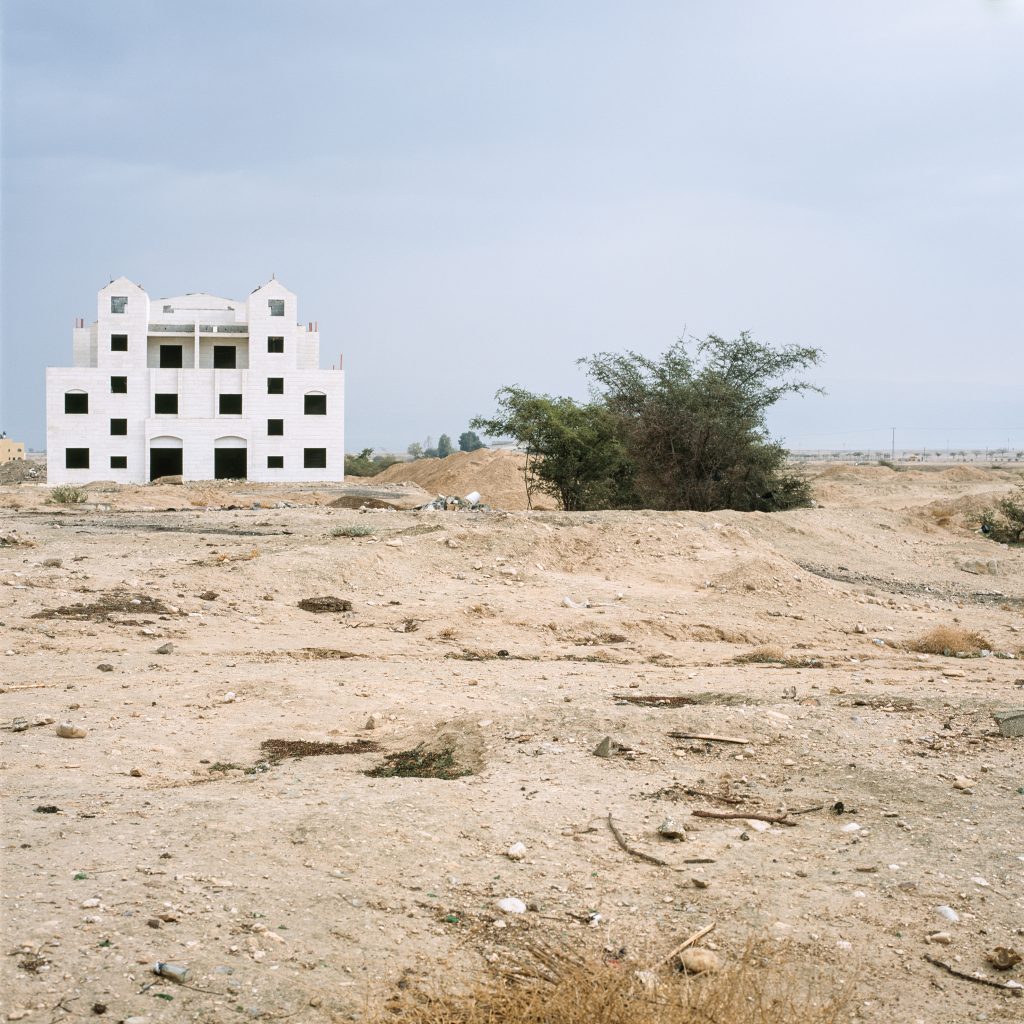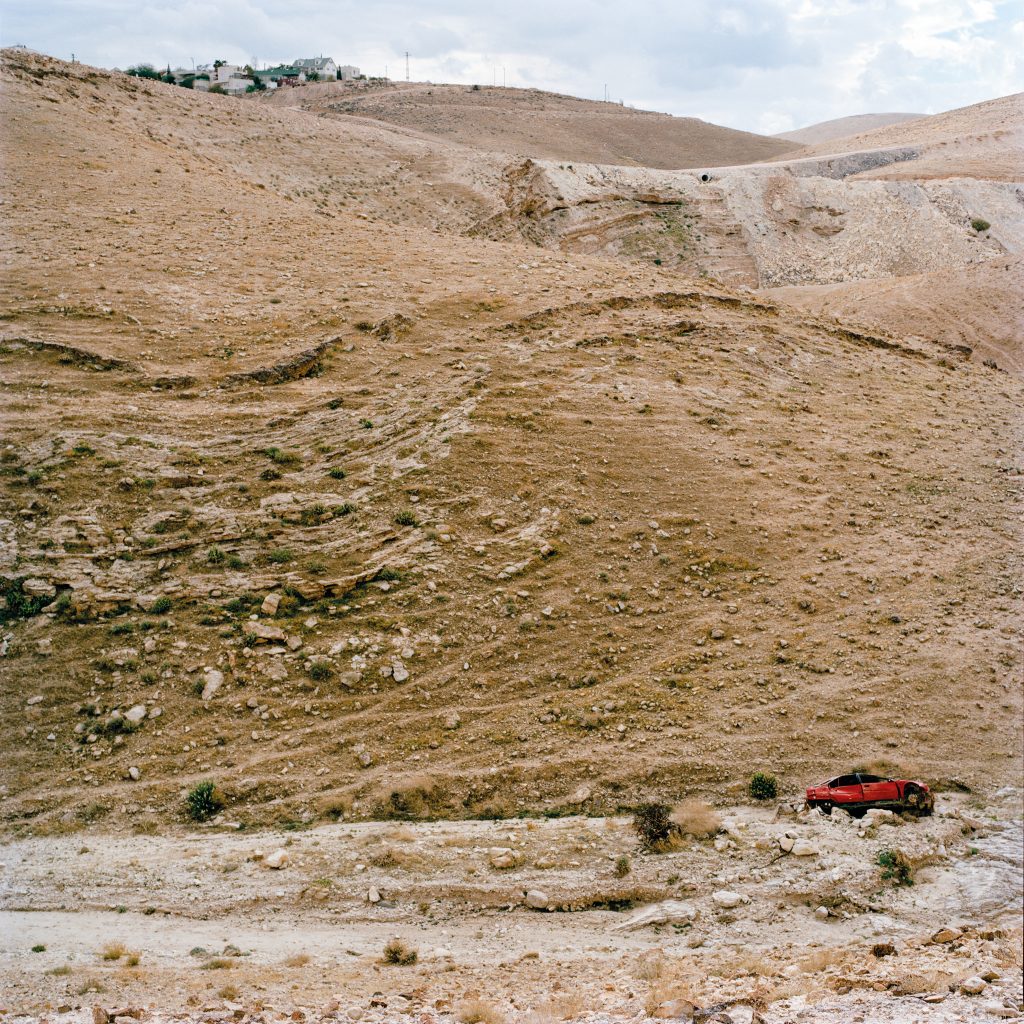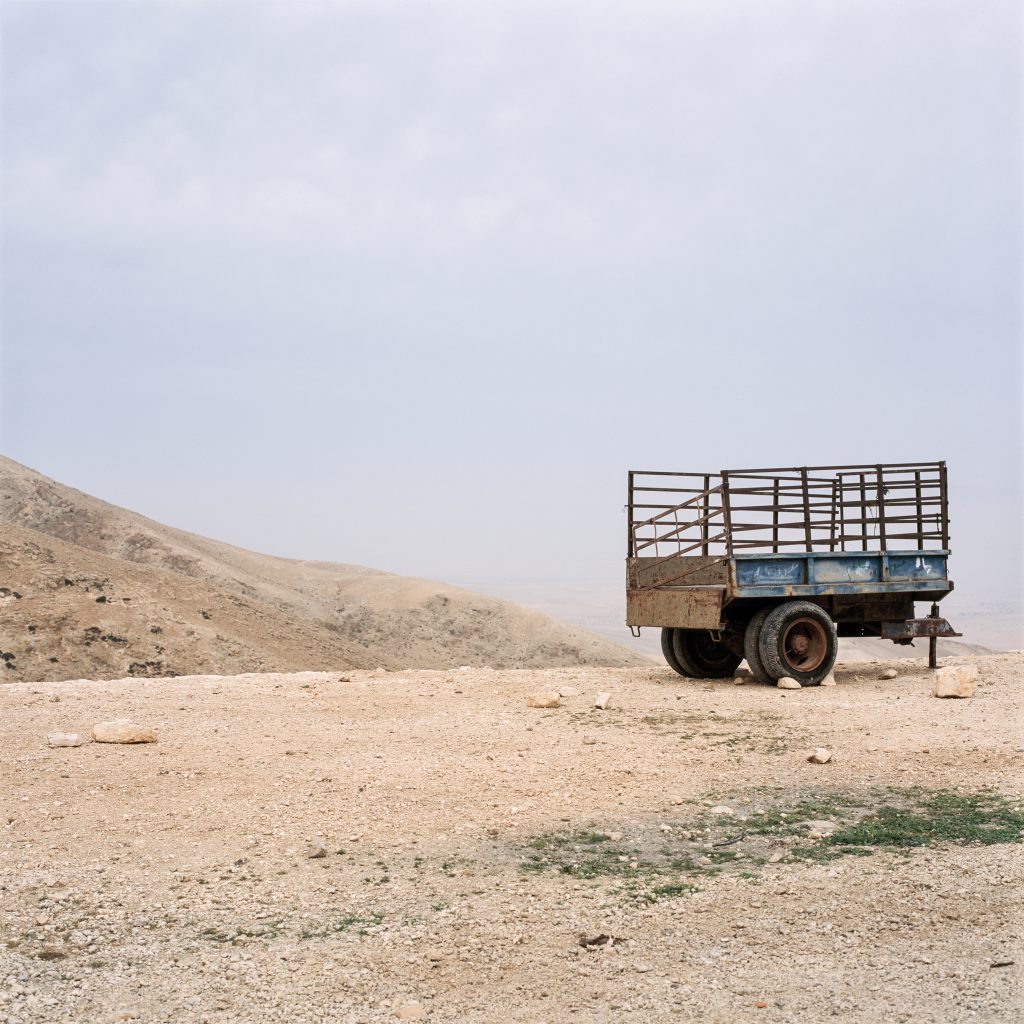by Daniela Tartaglia
_
“The soul of a country is in the eyes of its women, in its landscape at a certain time of the day, in a fragment, in a song, in a word”, writes Matilde Serao in 1893, in her Journey to Palestine, a diary in search of the very soul of Christianity but also of her own.
And among the many ways of telling the suffering of a population and what remains of its soul, without resorting to images of the struggle of the Arab Israeli conflict, there is certainly that of investigating and listening to the landscape, of giving voice to one of the most beautiful places in human history: a territory undermined by the destruction brought by by the war but also “by an active, industrious violence. Cadastral, even. The ugliness of asphalt and bitumen (…) the generalized disorder of the landscape “(Christian Salmon, 2003).
Federico Busonero – an intellectual who likes to put photography in relation to literature and history – in his long journey to Palestine, undertaken on behalf of UNESCO and culminated in 2016 in the book The Land That Remains, questioned himself at length about how to represent the Palestinian territory and in the end chose to appeal to memory, history, literature, to an imaginary which was intrinsic to the landscape. A selection of photographs from the book is now on display in Montalcino, for the first Italian exhibition after several abroad.

The complexity and thoughtfulness of his work allows him to address some theoretical issues that, from the beginning, have seen the contrast between photography as mimesis, description and cataloging, a super technological eye capable of seeing better than the human eye and photography as a tool for interrogation on the world, as a mean to get to know one’s own psychic reality, which is beyond the factual knowledge of the moment.
Federico Busonero adheres fully to the practice of photography as a method of investigation, as an existential, experiential approach. His vision comes from a strong urgency, it is a way to investigate the complexity of reality and to understand one’s own time in relation to history, a basic prerequisite for understanding the meaning of places, for questioning oneself about the very idea of landscape and about its changes and criticalities.

In the author’s words, The Land That Remains “transcribes and renders in images the beauty and suffering of the landscape of Palestine. It is a meditation on an epic civilization, today on the verge of disappearing, an elegy and a form of affection for its past and its present. The land that remains is an indefinable state of the immanence of all things, of all that we have already seen and known in other places and at other times and which we have forgotten. The Palestine that I visited remains elusive, pierced in the immobility of its time, I felt almost as an intruder approaching the contradictory topography of the present and the demanding past it contains: places of great significance and history, places of innumerable memories, places that resound with human suffering and dignity”
His vision comes from a great certainty: the power of the photographic image lies precisely in the unseen, in the unsaid, beyond the context of the fact itself. Like poetry, the photographs – writes Federico Busonero – “are first of all traces, memories of experiences. They are evocative rather than narrative. In learning what they communicate, we discover that there are other possibilities in them “.

Federico Busonero was born and raised in Grosseto, he has lived in the United States for many years but his Tuscan roots are deeply alive within him and have permeated him in his reading and measuring the space, in the search for harmony and proportions
In a “previous life” he worked as a doctor both in Africa and in the Middle East and then as a ship’s doctor. There are numerous awards and publications accompanying his professional and research activity but, surely, this book on Palestine represents his visual testament, the object in which his very personal look succeeds in regaining a subtle psychic dimension, although the design process remains strictly within a reading of space that enhances the descriptive aspect of photography.
His images are marked by a very strong physicality, coming from the use of the medium format, from the use of a considerable depth of field and a soft light with little contrast, which highlights the quality of the details. They bring us – as Matilde Serao wrote – “under the great sky of Palestine, a sky of a blue so tender that it goes into white” but they also have an “extra” quality that derives from the photographer’s ability to hear, to wait for a “certain light “capable of enhancing the” sacredness “of the Palestinian landscape, its deep identity undermined and made fragile by abandoned ruins, places destroyed by conflict, desertified land, no longer cultivated and cared for by human hands.

Traces of old and recent history, clues to a fracture are intertwined in Federico Busonero’s images; the remains of Roman settlements, of Arab conquests and Christian communities that coexist with fragments that tell us about the Israeli occupation, the creation of “infrastructures” connected to the creation of the wall, the dismissal of traditional agriculture in favour of a wild overbuilding, of everyday life and contemporaneity.
Despite this fragmentation, this inconsistency, despite the human madness, the identity of this sacred land – which is Palestine – remains and is imposed on the gaze and the conscience as the soul of the place is still there, because the gods haven’t yet abandoned it.
The profound merit of the photographs of this author lies therefore in the balance that he manages to establish between beauty and criticality, between form and content, between interpretation and history without ever falling into decoration and aesthetics. He is using photography as a searching gaze, as a tool that does not convey truth but can reveal the way to reach it.
The exhibition:
FEDERICO BUSONERO | THE LAND THAT REMAINS
Fondazione OCRA -Officina Creativa dell’Abitare
Via Boldrini 4, Complesso di Sant’Agostino – Montalcino (SI)
18 October – 8 November 2019
Mon – Fri: 10 – 18
free admission
The book:
Federico Busonero
The Land That Remains
Hatje Cantz, 2016
October 11, 2019




